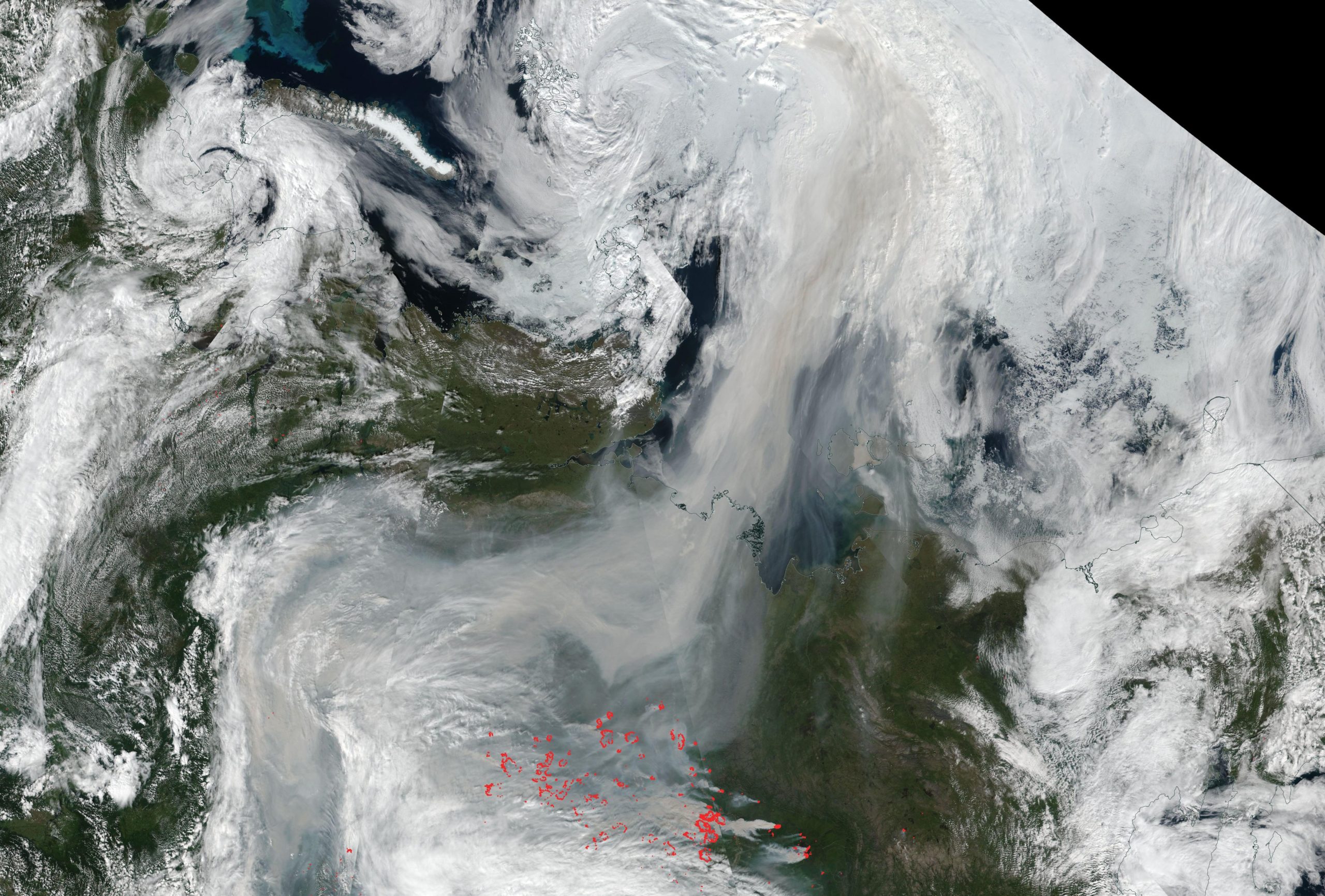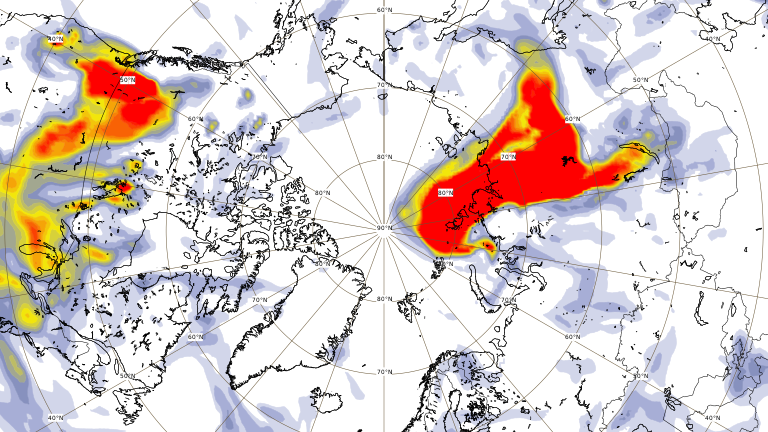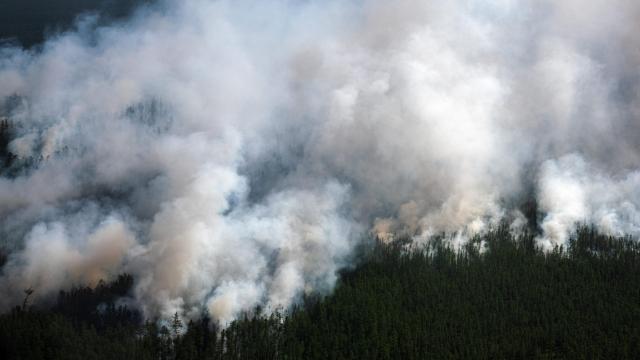Siberia is a famously cold place. But since May, it’s been extremely hot and extremely on fire. Those wildfires are so extreme that they’ve sent smoke streaming to the North Pole, and the plume is expected to reach Canada later this week.
This year’s wildfires are already outpacing last year’s record-setting season in terms of carbon dioxide being pumped into the atmosphere. Emissions from the fires are double the 2003 to 2020 average, and the flames are still spreading as fire rage out of control in an area known as the Sakha Republic.
Copernicus, the European Union’s Earth Observation Program forecast that plume was likely to reach the North Pole on Monday, travelling more than 3,219 kilometres to get there. Satellite images captured by NASA confirmed that forecast, with dense smoke swirling amidst the clouds over the top of the world. This marks the first time plumes from Siberian wildfires will have ever reached the region.

Later this week, smoke from the Siberian fires is expected to drift even further away, reaching northern Canada where it will cloud skies and pollute the air. Parts of Canada are already struggling due to wildfires burning across the country from British Columbia to Ontario.
The plumes are a concern for a variety of reasons. In inhabited areas of the Arctic, particularly those close to the wildfires themselves, they’re leading to horrible air quality issues. Any soot that falls out of the plume on sea and land ice could also speed up melting in a region already under siege from heat. That’s because dark soot can cause it to soak up more heat than lighter snow and ice. Those impacts are devastating for Indigenous communities that depend on sea ice to hunt and travel.

The fires are a symptom of the climate crisis. Officials have said the area on fire in the Sakha Republic is experiencing some of its driest conditions in 150 years, turning forests into a tinderbox. A study released in the wake of last year’s record fires shows the extreme heat that helped drive them was made 600 times more likely by the climate crisis. Scientists haven’t yet analysed the exact role of fossil-fuelled planetary warming in this year’s season, but it’s increasingly safe to assume that when there’s a heat wave happening, climate change is playing a role.
In a dark twist, these fires are making the crisis worse. The carbon dioxide they’re releasing was formerly stored in trees and soil. Once it’s in the atmosphere, it will heat things up further and up the risk of more large fires. That’s why it’s never been more urgent to reduce carbon emissions by eliminating fossil fuels and protect forests from these types of infernos.
